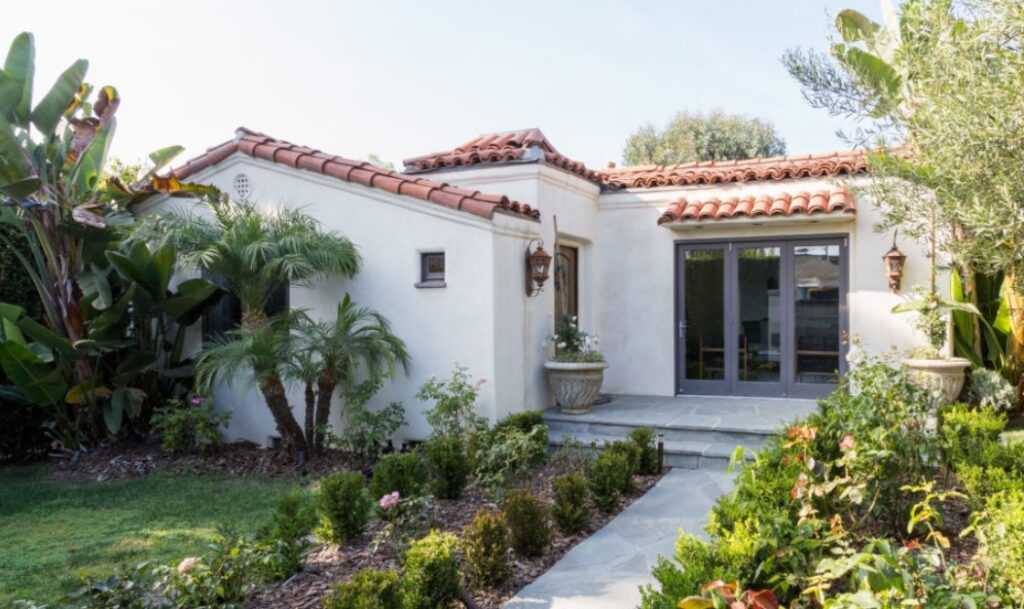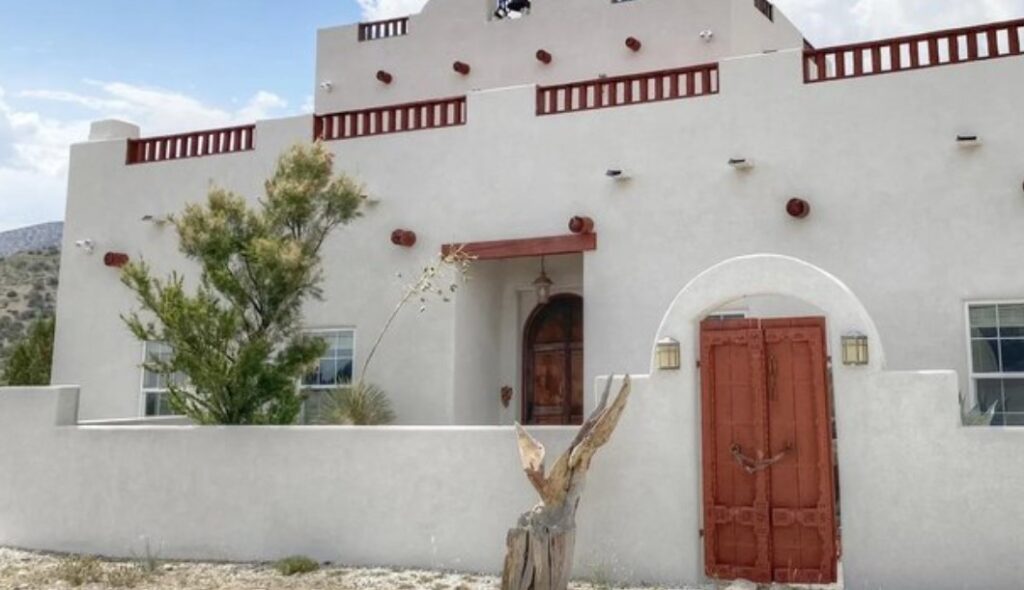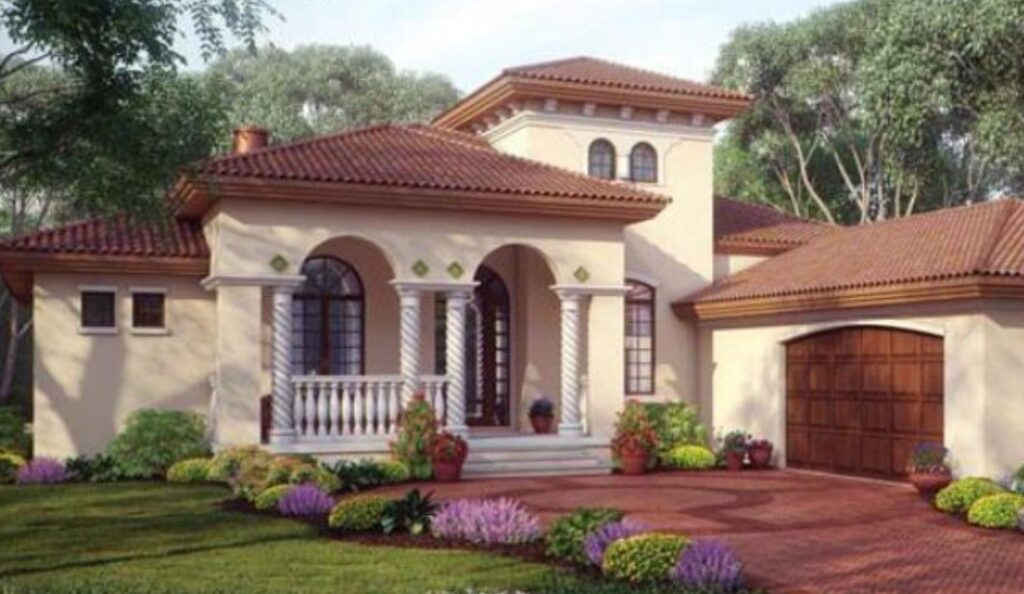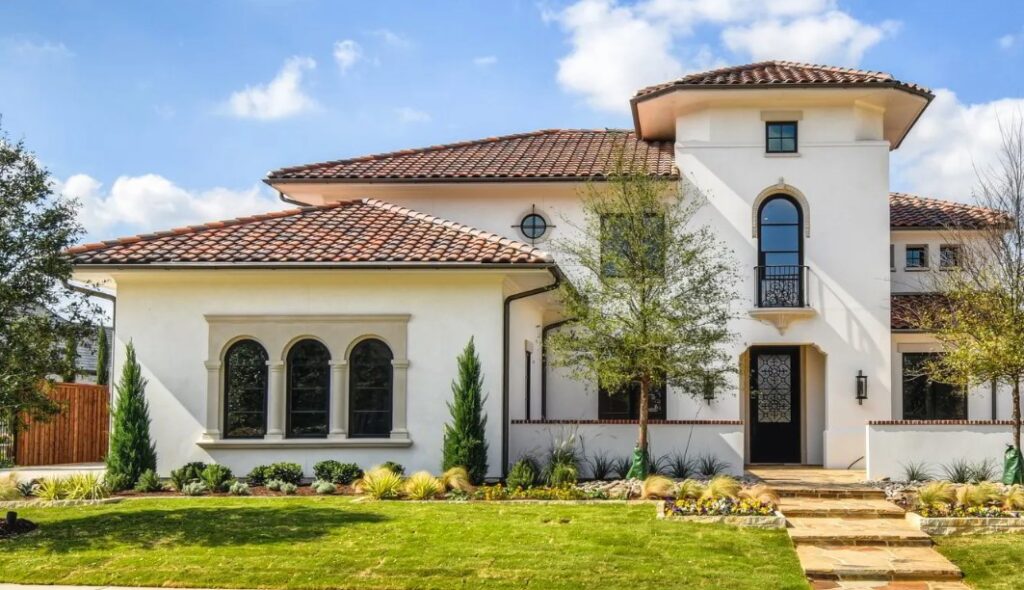Spanish style homes, inspired by the architecture of Spain and the Mediterranean region, exude warmth, charm, and timeless elegance. Known for their distinctive features and rich cultural heritage, Spanish style homes offer a unique blend of Old World aesthetics and modern comfort. Here’s a detailed exploration of what defines Spanish style homes and their key characteristics:
Key Characteristics of Spanish Style Homes

Spanish style homes are celebrated for their distinct charm, historical significance, and elegant aesthetics. Originating from the Mediterranean architectural tradition, these homes have a unique flair that combines various elements such as stucco exteriors, terracotta roofs, and arched doorways. In this comprehensive guide, we explore the key characteristics of Spanish style homes that make them timeless and desirable.
Historical Background
Spanish style homes, also known as Spanish Colonial Revival homes, draw inspiration from the architectural styles introduced by Spanish settlers in the Americas during the 16th to 18th centuries. The revival of this style in the early 20th century led to the proliferation of these homes, especially in regions like California, Texas, and Florida, where the climate mirrors that of the Mediterranean.
Exterior Features
Stucco Walls
One of the most defining characteristics of Spanish style homes is the stucco exterior. Stucco, a durable plaster, is applied over a wooden or masonry structure, providing a smooth or textured finish. The earth-toned color palette of the stucco, typically in shades of white, beige, or warm brown, not only reflects the Mediterranean influence but also helps to keep the home cool in hot climates.
Terracotta Roof Tiles
The terracotta roof tiles are another hallmark of Spanish style homes. These semi-cylindrical tiles are usually in a red or orange hue, offering both aesthetic appeal and practical benefits. The curved shape of the tiles helps to channel rainwater away from the structure, while the natural clay material provides excellent thermal insulation.
Arched Doorways and Windows
Arches are a significant architectural element in Spanish style homes. Arched doorways and windows add a graceful and welcoming touch to the exterior. These curves are not only visually appealing but also a nod to the Moorish influences in Spanish architecture. Often, the windows are adorned with decorative wrought iron grilles, enhancing both security and style.
Courtyards and Patios
Spanish style homes often feature central courtyards or patios, serving as an outdoor living space that extends the home’s footprint. These courtyards, surrounded by the main living areas, provide a private, tranquil space for relaxation and socializing. They are often adorned with lush plants, fountains, and ceramic tiles, creating a serene and picturesque environment.
Interior Features
Exposed Wooden Beams
The interiors of Spanish style homes frequently showcase exposed wooden beams. These beams, typically made from dark, rich wood, contrast beautifully with the lighter stucco walls. They add a rustic charm and historical authenticity to the living spaces.
Tile Work
Intricate tile work is a staple in Spanish style interiors. Colorful ceramic tiles are often used for flooring, stair risers, and kitchen backsplashes. These tiles feature vibrant patterns and designs, adding a splash of color and artistry to the home.
Fireplaces
Fireplaces are a common feature in Spanish style homes, often serving as a focal point in the living areas. These fireplaces are typically crafted with stucco or brick and adorned with decorative tiles and wrought iron elements, reflecting the home’s overall design theme.
Heavy Wooden Doors
The use of heavy wooden doors with ornate carvings and iron hardware is another characteristic feature. These doors not only enhance the home’s security but also contribute to its historic and sturdy appearance.
Landscape and Garden Features
Lush Gardens
The landscape surrounding Spanish style homes often includes lush gardens filled with Mediterranean plants such as bougainvillea, lavender, and olive trees. These gardens enhance the home’s aesthetic appeal and provide a seamless transition between indoor and outdoor living spaces.
Fountains and Water Features
Fountains and water features are integral to the landscape design of Spanish style homes. These elements add a soothing auditory element to the garden and contribute to the overall ambiance of tranquility and relaxation.
Wrought Iron Gates and Fencing
Wrought iron gates and fencing are commonly used to define property boundaries and add a decorative touch. The intricate designs of these ironworks are both functional and visually appealing, complementing the home’s architectural style.
Modern Interpretations
While traditional Spanish style homes maintain their historical charm, modern interpretations of this style have emerged, blending classic elements with contemporary design. These homes might feature open floor plans, large glass windows for enhanced natural light, and eco-friendly materials, all while retaining the signature characteristics of Spanish architecture.
Spanish style homes are a beautiful blend of historical elegance and modern comfort. With their distinctive architectural features, from stucco walls and terracotta roofs to arched doorways and vibrant tile work, these homes offer a timeless appeal. Whether you are drawn to their historical roots or their aesthetic charm, Spanish style homes provide a unique and inviting living experience.
Interior Design Elements

Spanish style homes are renowned for their warm, inviting interiors that combine rustic elegance with rich cultural influences. The interior design of these homes is characterized by a harmonious blend of natural materials, intricate details, and vibrant colors. In this detailed guide, we explore the key interior design elements that define Spanish style homes, creating a timeless and captivating aesthetic.
Exposed Wooden Beams
Rustic Charm and Structural Beauty
One of the most striking features of Spanish style interiors is the presence of exposed wooden beams. These beams, typically made from dark, rich woods like oak or cedar, add a sense of rustic charm and structural beauty to the space. They create a strong visual contrast against the lighter stucco walls and ceilings, emphasizing the architectural details of the home.
Intricate Tile Work
Colorful Patterns and Artistic Flair
Intricate tile work is a hallmark of Spanish style interiors. These homes often feature colorful ceramic tiles with vibrant patterns and designs. Tiles are used extensively on floors, stair risers, kitchen backsplashes, and bathroom walls. The use of tiles not only adds an artistic flair but also reflects the cultural heritage and craftsmanship of Spanish architecture.
Arched Doorways and Niches
Elegant Curves and Classic Appeal
The use of arched doorways and niches is another defining element of Spanish style interiors. These elegant curves add a sense of grace and classic appeal to the home. Arched doorways create a seamless flow between rooms, while niches are often used to display art, pottery, or other decorative items, enhancing the visual interest of the space.
Textured Walls
Stucco and Plaster Finishes
Textured walls are a distinctive feature of Spanish style interiors. Stucco or plaster finishes are commonly used to create a sense of depth and warmth. These textured surfaces can be smooth or rough, often with a slightly uneven appearance that adds to the rustic charm of the home.
Heavy Wooden Doors
Ornate Carvings and Iron Hardware
Heavy wooden doors with ornate carvings and iron hardware are a signature element of Spanish style homes. These doors, often crafted from solid wood, provide a sense of solidity and security. The intricate carvings and decorative iron elements add a touch of craftsmanship and historical authenticity.
Fireplaces
Warmth and Focal Points
Fireplaces are a common feature in Spanish style homes, often serving as the focal point of the living areas. These fireplaces are typically constructed from stucco or brick and adorned with decorative tiles and wrought iron elements. They provide warmth and create a cozy, inviting atmosphere, perfect for family gatherings and relaxation.
Wrought Iron Accents
Decorative and Functional Elements
Wrought iron accents are prevalent throughout Spanish style interiors. From light fixtures and railings to window grilles and door hardware, these elements add both decorative and functional value. The intricate designs of wrought iron work complement the overall aesthetic, providing a cohesive and stylish look.
Textiles and Fabrics
Rich Colors and Patterns
The use of textiles and fabrics in Spanish style homes is characterized by rich colors and intricate patterns. Woven rugs, tapestry pillows, and heavy draperies in bold hues such as red, orange, and blue are common. These textiles add warmth and comfort, creating a vibrant and welcoming environment.
Natural Materials
Stone, Wood, and Clay
Spanish style interiors emphasize the use of natural materials such as stone, wood, and clay. Stone floors, wooden furniture, and clay pottery contribute to the earthy, organic feel of the home. These materials are not only durable but also enhance the connection to nature and the outdoors.
Furniture and Decor
Handcrafted Pieces and Antique Accents
The furniture and decor in Spanish style homes often include handcrafted pieces and antique accents. Wooden furniture with ornate carvings, wrought iron bed frames, and leather upholstery are typical. Decorative items such as pottery, woven baskets, and vintage artwork add personality and historical depth to the interiors.
Open Floor Plans
Spacious and Airy Layouts
Spanish style homes often feature open floor plans that create spacious and airy interiors. The flow between the living room, dining area, and kitchen is seamless, enhancing the sense of openness and light. This layout is ideal for entertaining and allows for a flexible use of space.
The interior design elements of Spanish style homes are a beautiful blend of rustic elegance, cultural richness, and timeless appeal. From exposed wooden beams and intricate tile work to arched doorways and heavy wooden doors, every detail contributes to the unique and captivating aesthetic of these homes. Whether you are renovating an existing Spanish style home or inspired to incorporate these elements into your design, the result will be a warm, inviting, and stylish living space.
Landscape and Outdoor Features

Spanish-style homes are known for their timeless elegance and distinctive architectural features that blend Mediterranean influences with local traditions. Enhancing these homes with carefully curated landscape and outdoor elements can further accentuate their beauty and create a welcoming ambiance.
Courtyards and Patios
Central to Spanish-style homes are their inviting courtyards and charming patios that extend the living space outdoors.
- Central Courtyards : Central courtyards serve as focal points, often featuring lush greenery, tiled floors, and sometimes a central fountain or seating area. They provide a private retreat and enhance the home’s connection to the outdoors.
- Enclosed Patios : Enclosed patios offer sheltered outdoor living spaces, typically surrounded by stucco walls or wrought iron fences. These areas are perfect for dining, relaxing, or entertaining guests.
- Courtyard Gardens : Courtyard gardens in Spanish-style homes often feature Mediterranean plants like citrus trees, lavender, and succulents. They emphasize natural beauty and add a refreshing atmosphere to the home.
Terracotta and Tile Elements
Terracotta and decorative tiles are signature elements of Spanish-style architecture, both inside and outside the home.
- Terracotta Roof Tiles :Terracotta roof tiles not only add visual warmth but also reflect the region’s climate. They are durable and complement the earthy tones of the home’s exterior.
- Decorative Tile Accents : Decorative tile accents, such as colorful mosaic patterns or hand-painted tiles, are used on stair risers, fountain surrounds, and wall niches. These tiles add a touch of artistry and personality to outdoor spaces.
- Tile Pathways : Tile pathways meandering through gardens or leading to different areas of the property enhance the aesthetic appeal of Spanish-style homes. They can be simple terracotta tiles or intricate patterns that echo traditional Spanish designs.
Water Features
Water features play a significant role in Spanish-style landscaping, creating a soothing and serene atmosphere.
- Spanish-Inspired Fountains : Spanish-style fountains often feature tiered basins, intricate tile work, and soothing water sounds. They serve as focal points in courtyards or gardens, adding a sense of tranquility and elegance.
- Reflecting Pools : Reflecting pools or small ponds with still water mirror the sky and surrounding greenery, creating a calming effect and enhancing the beauty of outdoor spaces.
- Ornamental Ponds : Ornamental ponds with aquatic plants and fish can be integrated into larger gardens, adding biodiversity and visual interest while maintaining a serene ambiance.
Mediterranean Plants
Mediterranean plants thrive in the climate and soil conditions typical of Spanish-style homes, adding lush greenery and vibrant colors.
- Olive Trees : Olive trees are iconic in Mediterranean landscapes, with their silvery leaves and gnarled trunks adding a rustic charm to gardens and courtyards.
- Citrus Trees : Citrus trees, such as lemon, orange, and lime, not only provide fragrant blossoms and fruit but also symbolize abundance and hospitality in Spanish culture.
- Bougainvillea and Jasmine : Bougainvillea with its vibrant blooms and jasmine with its fragrant white flowers are popular choices for adding color and fragrance to garden trellises, walls, and pergolas.
Architectural Details
Architectural details in Spanish-style homes emphasize craftsmanship and historical authenticity.
Arches and Columns
Arches and columns are prominent architectural features that create visual interest and define outdoor spaces. Arched doorways and pergolas covered with climbing vines are classic elements of Spanish design.
Wrought Iron Accents
Wrought iron gates, railings, and light fixtures add a touch of elegance and contrast to the stucco exteriors of Spanish-style homes. These handcrafted accents are both functional and decorative.
Stucco Finishes
Smooth stucco finishes in warm earth tones, such as terracotta, ochre, and creamy whites, give Spanish-style homes their distinctive appearance. Stucco is durable and complements the natural landscape.
Outdoor Kitchens and Dining Areas
Outdoor living is essential in Spanish-style homes, with kitchens and dining areas designed for enjoying meals and gatherings al fresco.
Tiled Outdoor Kitchens
Tiled outdoor kitchens equipped with grills, countertops, and sinks allow for easy meal preparation and entertaining. They often feature decorative tile backsplashes and built-in seating areas.
Al Fresco Dining Spaces
Al fresco dining spaces, whether under a pergola or in a shaded courtyard, encourage outdoor dining and socializing. Tiled tables and wrought iron chairs create a cozy and inviting atmosphere.
Barbecue and Grill Areas
Barbecue and grill areas are essential for outdoor cooking, often integrated into tiled patios or adjacent to outdoor kitchens. They are perfect for hosting casual gatherings and enjoying the Mediterranean climate.
Enhancing Spanish-style homes with carefully planned landscape and outdoor features not only enhances their aesthetic appeal but also creates functional and inviting spaces for outdoor living. Whether you incorporate lush courtyard gardens, terracotta accents, soothing water features, or Mediterranean plants, each element contributes to the timeless charm and warmth of Spanish-style architecture.
Conclusion

Spanish style homes capture the romance and allure of Mediterranean architecture, blending historic influences with modern comforts. Whether you’re drawn to the stucco exteriors, tile roofs, or the inviting warmth of interior details, embracing Spanish style can create a distinctive and welcoming retreat that celebrates timeless elegance and cultural heritage.
